You can download Good Design + Education here or find the full text below.
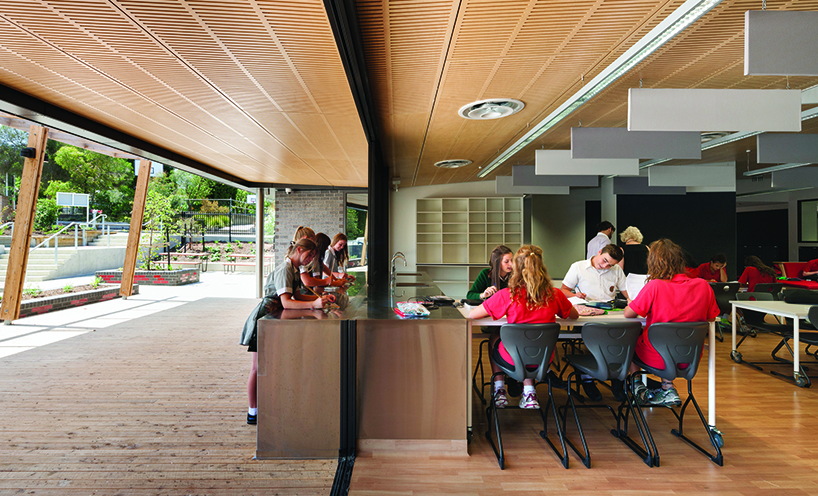
The Office of the Victorian Government Architect (OVGA) provides leadership and strategic advice to the government about architecture and urban design.
OVGA supports the Department of Education and Training with advisory initiatives, including the design review of new schools, collaborative workshops, design quality teams, desk top reviews and input on briefs. Good design plays an essential role in enabling high-quality education environments that support the learning needs of every student. Our aim is to encourage awareness of the importance of good design to the quality of educational environments for students and staff. The primary audience includes those working on education projects in state government departments and in local government.
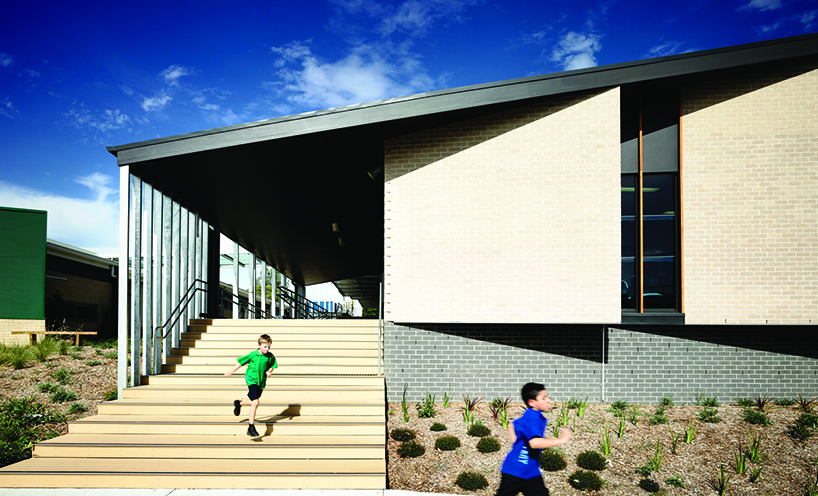
This publication is the sixth in a series that is helping to raise awareness of good design and promoting discussion supporting its benefits and value. The publication has been developed by OVGA together with the Department of Education and Training. It highlights key design principles and outlines some effective approaches to achieve good design.
Learning is determined by effective teachers and motivated students, but increasing evidence demonstrates that students’ learning outcomes are related to the quality of learning spaces and building performance.

Aspects of design and environmental conditions that impact on learning include noise, temperature, seasonal variation, humidity, air quality, ventilation, air flow, thermal comfort, building age, quality and aesthetics, natural and artificial lighting, school size and class size. There is strong evidence that the quality of a school building and the open space around it can have a profoundly positive impact on student concentration, attendance and educational outcomes.
Spaces that support students learning from each other and through their own self-directed activities are vital to contemporary learning. In addition, a well-designed school provides a better workplace environment for teachers by contributing to recruitment, staff productivity, retention, morale and reduced absenteeism (Zimring et al. 2008).
Schools should be designed as welcoming, safe and stimulating environments to complement their role to nurture students, support staff and foster local community identity. School environments include not only social, cultural and physical aspects, but also natural, built and virtual environments.
Building quality and lifecycle
Over the life of a school, evidence shows that bad design ends up costing money, for example through higher maintenance costs, while good design is cheaper in the longer term and adds real value. Good design can increase the value for money that school buildings provide across their whole life. Well-designed school buildings are cost-effective and provide a long-term community asset.
Participatory pedagogy
Contemporary education is no longer based on a ‘chalk and talk’ teaching method that is carried out in a traditional classroom. Contemporary learning requires a variety of settings, technology and opportunities for interaction. New learning spaces need to be flexible, both pedagogically and physically, to ensure that teachers can refine their approach and use information and communication technologies (ICT). Successful collaboration relies on appropriately designed physical spaces and consideration of their interrelationship.
Innovative approaches to pedagogy are successful when the school community, teachers and students prepare for them before new buildings and spaces are designed.
Input from students and educators is necessary to initiate innovative pedagogies and support contemporary student learning in the design of new buildings and spaces. Pedagogical change requires time and teachers need to be given the professional skills, resources and tools to benefit from good design and change their practices.
Each school belongs to a unique place and community
Community vision, integration and school culture
The link between the built environment and learning outcomes relies on teacher– student relationships, the quality of the built and natural spaces and the school culture. If learning spaces are designed to support physical, intellectual and emotional wellbeing then there are benefits for students and teachers.
Schools at their best function as the centre of the community and offer the opportunity to share facilities. Many schools and communities work together to share library facilities, sporting facilities, meeting spaces, performance spaces, holiday programs, and co-location of early learning centres and before and after-school programs on school grounds. Close links between a school and its community can enhance student learning, public safety, health and economic wellbeing. Interconnectivity between the school and community can assist in culturally diverse and disadvantaged areas.
Schools are one of the few types of public building still being built in new communities. They help set the urban structure, create legibility and provide a landmark in the landscape. Good urban design integrates schools with surrounding communities through careful consideration of building form and scale; the location of access routes and surrounding infrastructure; and by considering the co-location of related uses and activities.
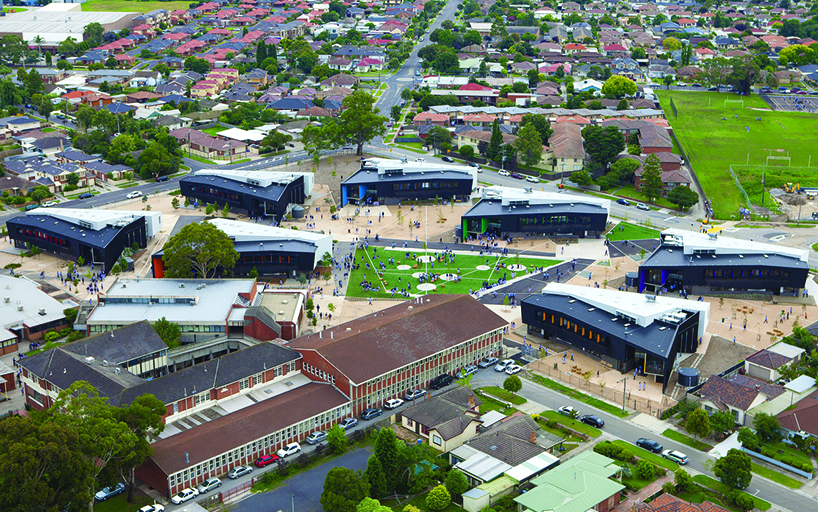
Masterplan
An important starting point for any school is the design of a masterplan. A masterplan provides the spatial framework for an educational environment fully aligned with a school’s mission and opportunities and constraints arising from its site. It helps coordinate diverse considerations into a strategic long-term plan for facilities.
A masterplan helps provide for staged delivery that is reliant on future funding, helps integration with community facilities and helps deal with potential changes in student numbers. It informs the outdoor spaces between buildings and the linkages and opportunities beyond the school.
An enduring legacy of any government is the quality of school buildings that it delivers
A collaborative brief
A carefully conceived, documented and thoroughly reviewed project brief is the most critical driver leading to high-quality design. The brief must outline the objectives and needs of the project, setting the design ambitions without prescribing a solution.
Ideally the brief is developed collaboratively between the design team, education policy makers, educators and students so that underlying assumptions throughout the design and development process are challenged. Schools that are developed in a collaborative partnership create better communities and more engaged students.
Procurement of design services and buildings
The procurement of a well-designed school starts with the appointment of a quality design and project team. Design teams are generally selected through expressions of interest (EOI) and requests for proposal (RFP). The design team includes architects, landscape architects and specialist consultants, such as heritage architects.
Procurement methods have a significant impact on the quality of the final building and its operation. Education projects are more commonly procured using a traditional lump-sum contract. While good design can be achieved with all procurement methods, some make it seriously challenging unless potential threats to design quality are understood and managed.
Where the physical environment is purposefully designed to support particular values and beliefs it can become a 'teacher' in itself.
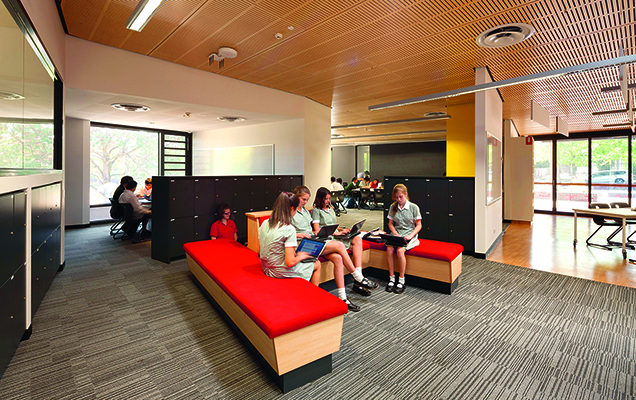
Internal learning spaces
All learning spaces should inspire students and promote learning as an activity. They support both collaboration and personalised learning.
Studies have found that the quality of educational environments has a profound effect on the performance, health, safety, self-esteem and wellbeing of students (Kube 2006). Learning spaces and settings should be designed to cater for a range of learning styles and group sizes. They should include areas for: collaboration and incubating ideas, group learning, presentation, specialised focus labs, project space and wet areas, display areas, student breakout, teacher meetings, reflective and quiet spaces, individual student home bases.
A key challenge is to design with and integrate existing 19th and 20th century buildings and to ensure ageing school facilities remain viable. For example, a new design may need to alter existing structure to allow for new learning spaces and widening existing corridors spaces. Design opportunities can also arise in delivering new forms of schools such as ‘vertical schools’ that provide landmarks and offer legibility in the community, capture views, ensure cross-ventilation, increase activity levels with stairs, encourage interaction and protect ground-floor play areas.
It is important that learning environments are designed for all students and teachers using universal design principles. Universal design recognizes that there is a wide spectrum of human abilities, including physical, perceptual and cognitive abilities as well as there being different ages, body sizes and shapes.
The design, flexibility, function and quality of furniture is another crucial factor in achieving pedagogical aims. It is important the designer is involved in the selection of furniture to ensure the learning spaces achieve their intended purpose. Furniture can help transform open flexible learning spaces and should be able to be moved by staff and students to optimise learning opportunities.
The choice of colour in learning areas can help students and teachers to stay focused, and can affect students’ attention spans, eyestrain, work productivity and accuracy. A school’s overall colour scheme should:
- support the function of the building and the tasks that are carried out in it
- complement the display of student work
- create positive emotional and physiological effects
External learning environment
Good design in a school’s outdoor areas can support pedagogy through providing an extension of the indoor learning environment. Play as pedagogy is important as it influences the child’s social, physical and cognitive skills. In primary schools it is important that a variety of spaces and activities encourage creative play. While fixed modular equipment has its place, moveable elements and loose materials are more effective in encouraging creative play. In secondary schools it is important that there is sufficient space for both genders and that it is supported by teacher supervision, adequate seating, equipment and materials.
Students learn best when they are immersed in their immediate environment and are using all five senses. The careful design of outdoor learning spaces can instill an appreciation of the natural environment and bring about sensory, health and aesthetic benefits.
Well-designed landscapes can improve the functionality, durability and flexibility of open spaces, the thermal performance of buildings and offer shade and shelter in playgrounds.
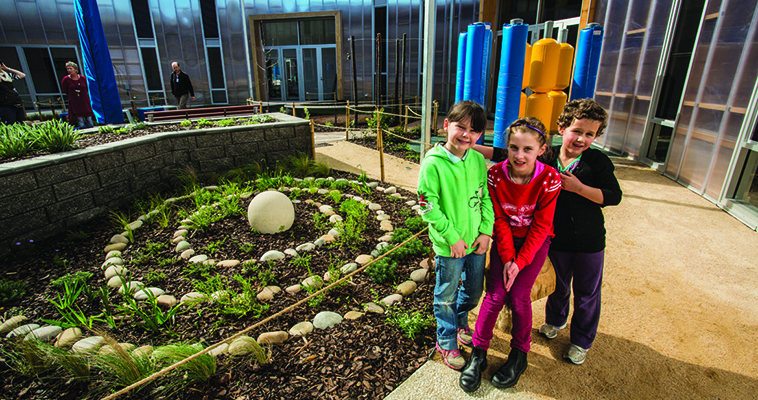
Important considerations include
- Conserving and respecting the natural vegetation, topography, ecology and heritage of the site.
- Evaluating the main entry points, nodes, linkages and gateways for students and the local community.
- Integrating the expertise of a landscape architect in the masterplanning or site planning process as early as possible so the key assets of the site are celebrated; and a hierarchy of open space is established to provide functional, flexible and durable landscapes to support positive learning environments.
- Designing the spaces between buildings to foster various modes of recreation, gathering and socialising establishing a consistent design intent between the architecture and the landscape.
- Demonstrating sustainable land management practices and landscape design that reflects the indigenous history of an area.
- Providing high-quality furniture in configurations that can support outdoor teaching.
- Integrating interpretive and educational opportunities within the landscape to facilitate active and passive outdoor learning.
- Providing ongoing maintenance of outdoor areas.
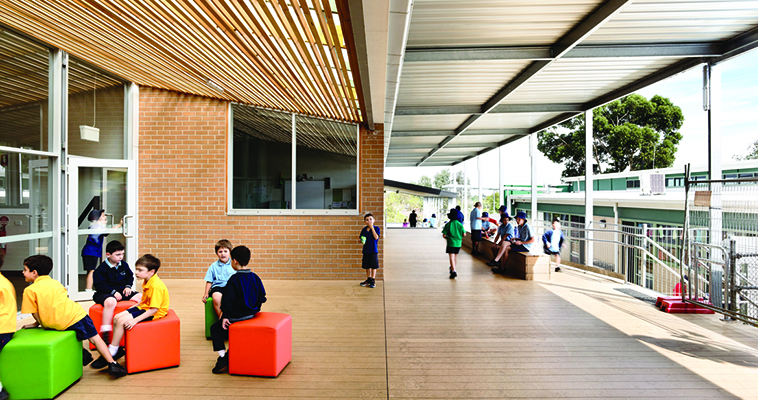
Contact with nature is vitally important in children’s physical and mental development, and integrated outdoor educational areas can measurably enhance learning opportunities.
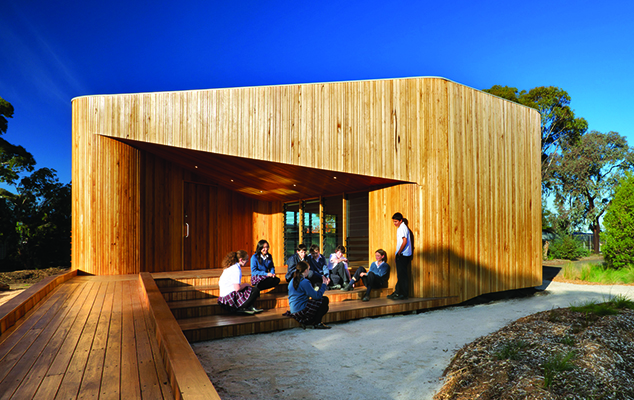
Future innovation
The design of inspiring buildings requires an ability to adapt to educational and technological change. ICT can give schools the option of teaching children as individuals, in small groups and in large groups, and offer electronic links to other schools and facilities. This relies upon designing spaces in schools that are flexible and will facilitate various patterns of group working. The inevitable evolution of ICT will require future-proofed spaces and flexibility in classroom design to support teaching.
ICT can help to engage students, enhance personalised learning, develop technological literacy and promote inclusivity. High-speed internet access helps students to test and share their learning on a global scale.
Relocatables
In education, the reliance on relocatables presents challenges and opportunities for innovation. Relocatables make up a significant component of school infrastructure and accommodate a quarter to a third of students in some Australian states.
While they allow for shifting demographics, changing school size, natural disasters, changing pedagogy and accommodation in remote locations, they also need to be carefully considered and designed. The ‘Future-proofing schools design ideas competition’ in 2011 highlighted innovative solutions in the prefabrication, design and use of relocatables.
It is where children learn that matters, as much as what they learn.
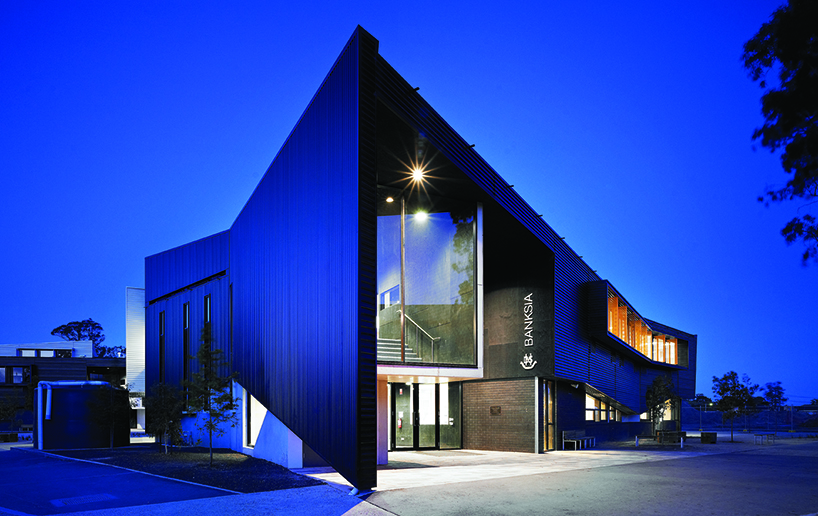
The paradox is that while relocatables are intended to be temporary, they often come to be semi-permanent or permanent within school grounds. The immediate challenge for the placement of relocatables is to ensure they are integrated with the school’s masterplan.
A considered design response might envisage a range of possibilities – a relocatable may enclose a courtyard, act as an extension of the permanent buildings or assist to define the edges of play spaces. Good design and master planning ensure that such elements are considered part of the overall design proposition rather than as merely utilitarian and thus marginalised on site.
Post-occupancy evaluation
A post-occupancy evaluation is crucial to encouraging good educational outcomes. It can identify successes and weaknesses as well as providing benchmarks to inform future projects.
A post-occupancy evaluation is a formal evaluation process where information is accurately recorded to produce an objective impression of the project and its design outcomes.
The evaluation should have a clear and specific goal. This may include delivery outcomes, safety and comfort, and operational performance data, as well as informing future procurement methods for project delivery and their impact on design outcomes.
Schools should be designed with the student at the centre of every decision. Spaces should enable teachers, communities, curriculum and technology to come together as an integrated whole to meet the needs of all students in a flexible and sustainable way.
Key steps — what to do
- Establish the design vision with the community. Each school is unique in terms of place, people, climate and philosophy.
- Support the school to agree to their pedagogical approach/philosophy to inform the design and learn from other school models.
- Prepare a strong brief with clear design objectives.
- Have a good procurement process to appoint the best designers, not just the familiar. Provide opportunities for emerging practices. Be aware that the procurement strategy will affect the design and define processes to protect design intent and quality.
- Allow time for design and for participation in site planning and masterplanning within a design-led process.
- Engage students and educators to achieve design integration.
- Allow for change in principal and staff, educational approach and information technology by embedding a design intent document.
- Design to reduce long-term maintenance costs and environmental impacts.
- Create a separate budget for the end of the project to allow adaptations as students and teachers start to use the building.
- Support teachers to use the new spaces.
- Always complete a post-occupancy evaluation and continue to adapt the environment – things will continue to change.
- Protect the budget for implementing landscape works and an ongoing maintenance program.
Perhaps the most influential settings in a child’s development are the places where they learn – schools, outdoor spaces and places of informal learning. Creating healthy and vibrant learning environments can have both physical and psychological benefits and can also function as sources of learning themselves – architecture as pedagogy about living sustainably within our environment.
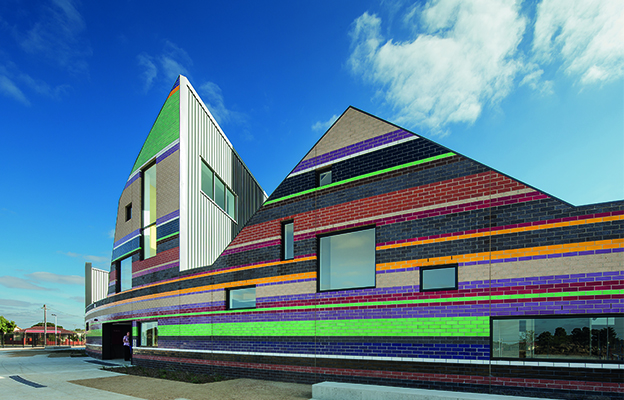
Good design principles + value
Identity and context
Designing a school of which the students, educators and community can be proud and which also enhances neighbourhood amenity and urban structure.
Site plan
Making the best use of the site’s natural and physical features, views and edges.
Landscape
Making outdoor spaces assets for learning, diverse in use and function, age-appropriate and implementing a landscape strategy that allows for larger trees to be established early followed by input from the school community.
Masterplan
Creating a clear hierarchy for the buildings and spaces between and capturing opportunities beyond the site boundary.
Buildings
Making form, mass and appearance work together.
Interiors
Creating excellent spaces for learning and teaching.
Pedagogy
Engaging the school community, educators and students in the design process.
Inspiring spaces
Beyond function, architecture should excite the imagination and create spaces that are: engaging, diverse and inclusive; culturally rich and poetic; and a great place to be.
Feeling safe
Creating a secure and welcoming place.
Universal design
Designing an inclusive built environment.
Long life, loose fit
Designing for whole-of-life, creating a school that can adapt and evolve in the future, integrate community use and is flexible in structure and plan.
Ecological sustainability
Designing for environmental, social and economic sustainability, efficient lifecycle, maintenance cost and resource usage.
Successful whole
Making a design that works in the round and for interstitial spaces.
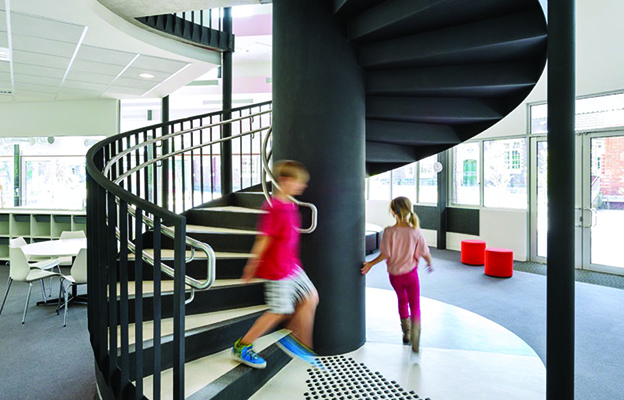
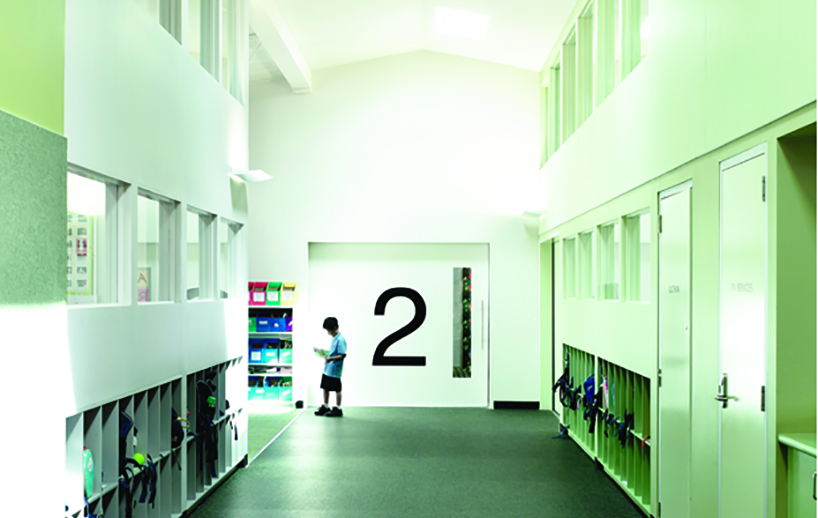
References
- Atkin J 2011, ‘Transforming spaces for learning’, in Designing for education: compendium of exemplary educational facilities, OECD CELE, p. 26.
- Australian Institute of Landscape Architects 2010, School landscapes national policy statement.
- CABE 2010, Creating excellent primary schools: a guide for clients.
- CABE 2010, Creating excellent secondary schools: a guide for clients.
- Department of Education and Early Childhood Development 2011, Research into the connection between built learning spaces and student outcomes. Literature review paper no. 22.
- Education Policy and Research Division DEECD, State Government of Victoria, Melbourne.Department of Education and Early Childhood Development 2008, Victorian school design guide, State Government of Victoria, Melbourne.
- Dudek M 2000, Architecture of schools: the new learning environments, Architectural Press, Woburn, MA. p. 13.
- Hattie J 2009, Visible learning: a synthesis of over 800 meta-analyses relating to achievement, Routledge.
- Hayball Architects 2013, Exchange, Collaboration, Convergence, Conversations. P. 41.
- Jensen B 2014, Turning around schools: it can be done, Grattan Institute.
- Kube T 2006, ‘Students and buildings – the vital link’, Teacher Magazine, November, Australian Council for Educational Research, Camberwell. pp. 6–8.
- Lee, L 2011, An integrated design strategy for South Australia - building the future, Department of the Premier and Cabinet, Adelaide Thinkers in Residence, 2010.
- Newton and Fisher 2009, Take 8 learning spaces: the transformation of educational spaces for the 21st century, Australian Institute of Architects, Manuka, Australia.
- Rinaldi, C 2013, Re-Imagining Childhood – The inspiration of Reggio Emilia education principles in South Australia, Department of the Premier and Cabinet, Adelaide Thinkers in Residence, 2012-2013.
- Westwell, M 2013, When the educational neuroscience meets the Australian curriculum: a strategic approach to teaching and learning, Australian Council for Educational Research, Research Conference 2013.
- Zimring CM, Augenbroe GL, Manone EB and Sadler BL 2008, Implementing healthcare excellence: the vital role of the CEO in evidence-based design, The Centre for Health Design, Concord CA.
- Zyngier, D 2014, Class size and academic results, with a focus on children from culturally, linguistically and economically disenfranchised communities, Monash University.
Related websites
- Department of Education and Training - www.education.vic.gov.au
- Council of Education Facility Planners International (CEFPI) - www.cefpi.org.au
- Learning Environments Applied Research Network (LEaRN) - learn-network
- Australian Institute of Architects - www.architecture.com.au
- Sustainability Victoria - www.sustainability.vic.gov.au
- Green Building Council of Australia - www.gbca.org.au
- Commission for Architecture and the Built Environment (CABE), UK - www.designcouncil.org.uk/our-services/built-environment
Updated
